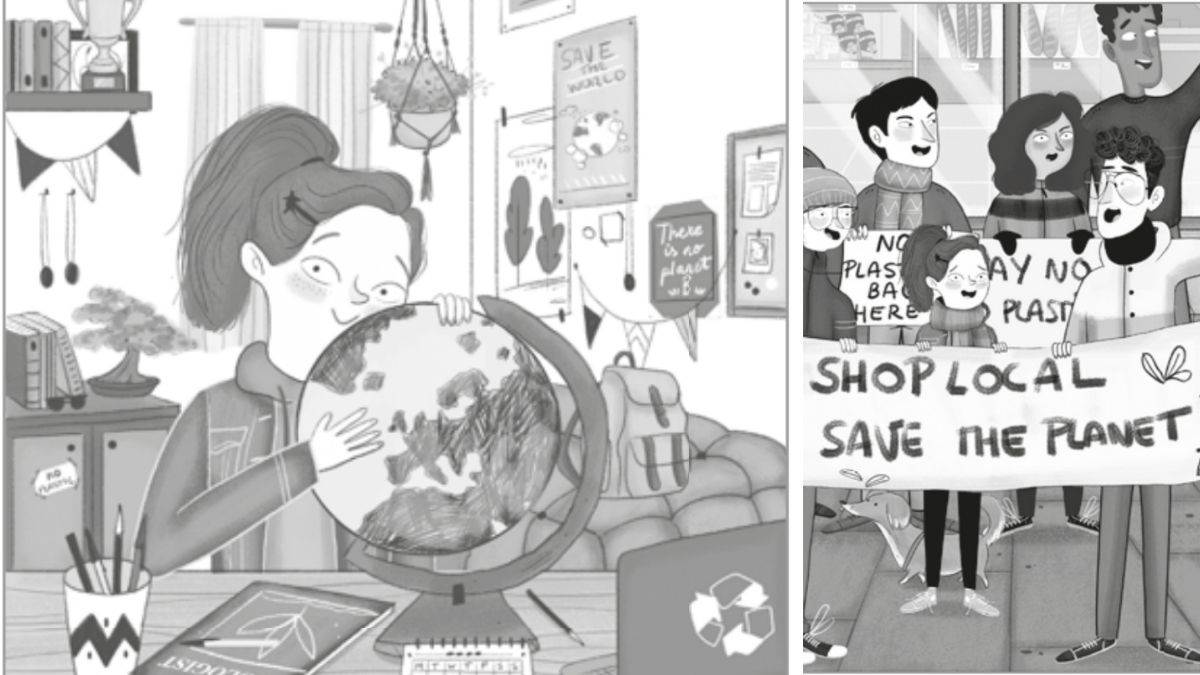How to Save the World
Published on: 12 June 2020
Josh Lacey, author of Hope Jones Saves the World, explains what you can do to help stop climate change.

What should I be doing about climate change? As an author of children’s books, do I have a particular role or responsibility? Should I be shielding my readers from the terrors that await us - or educating them about the apocalypse around the corner?
I write for young children - primary school age - and I absolutely wouldn’t want to make my readers feel any pain or anxiety. I want to amuse and entertain them; I want to make them happy.
And yet, at the same time, I also want to educate my readers about the world, just as I want to educate and inform my own children, and prepare them for the future.
I struggled with all these questions while I was writing my new book, Hope Jones Saves the World. It’s the first of a series about a girl who is worried about the state of the world - and is determined to do something about it.
I didn’t want my book to be po-faced or sombre - I like books that make me laugh - but I didn’t want to lie about climate change or deny what’s going on. The situation is frightening. Our children know that already. We can’t hide the realities of climate change from them. They’ve all seen those pictures of polar bears balancing on a skimpy ice floe. But we can offer them ways to think about the future - and help them find their own ways to express their anger and sorrow.
My book is disguised as a blog, a series of online diary entries written by a girl who has just decided on her New Year’s Resolution. This is how she introduces herself on the first page: “My name is Hope Jones. I am ten years old. I am going to save the world.”
As soon as I started writing in her voice, Hope took over the book, pushing me and my anxieties aside. Her voice was so strong, passionate, and full of life! She made me laugh, but she also made me feel optimistic about the future.
I know exactly how Hope would answer my questions: she would say that she didn’t want to be shielded or protected from unpleasant realities. She’d rather know the truth about everything and have the chance to make up her own mind.
The first book in the series is focused on the issue of single-use plastics. Hope protests outside the supermarket, asking them to cut down on their use of plastic wrapping, plastic containers, and plastic bags. To her astonishment, her small actions have big consequences: people join the protest; the supermarket’s owners sit up and take notice; she’s summoned to a meeting in their swanky offices and invited to discuss her ideas with the boss.
I hope readers will be amused and entertained by Hope’s conversation with the chief executive of the supermarket chain - and perhaps even inspired to contact the manager of their own local supermarket. Or at least re-use a plastic bag rather than dumping it in the rubbish.
Hope has no magical powers or exceptional skills. She’s not Wonder Woman or James Bond - or even Alex Rider. Her methods for saving the world are straightforward and everyday. She begs her neighbour to put out his recycling. She scrubs the toilet with an eco-friendly cleaner made from vinegar, lemon, and baking soda. She argues with her grandfather and tries to persuade him that global warming isn’t a media hoax.
If we’re really going to save the world, change must come from governments and multinational companies, rather than the little people (us). But that doesn’t mean that there’s nothing we can do.
Through her protests, Hope discovers that she has the power to make a difference to her family, her neighbourhood, and beyond.
Maybe she really will save the world.
Read our review
Author: Josh Lacey Illustrator: Beatriz Castro
Hope has managed to convince her dad to switch to eco-friendly products to save the planet - but getting her sister to ditch her favourite over-packaged make-up is trickier. When Hope begins protesting outside the supermarket, she quickly attracts lots of media attention - but when she's invited to meet the CEO, will she be able to make a difference?
More books about the environment
Add these books to your reading list to learn how you can tackle climate change.
Favourite books about the environment (older children)
From climate change to animal conservation, these picture books, poetry collections, novels and graphic novels will encourage children and young people to think about and discuss pressing issues about the environment.
Topics: Features







